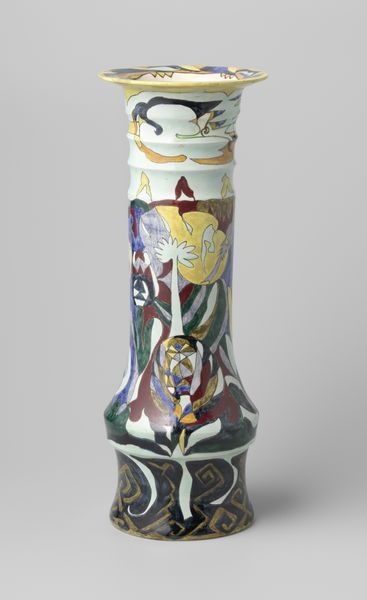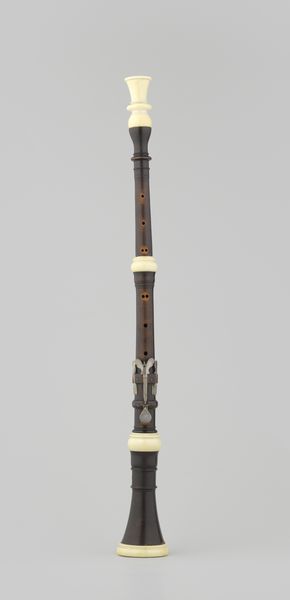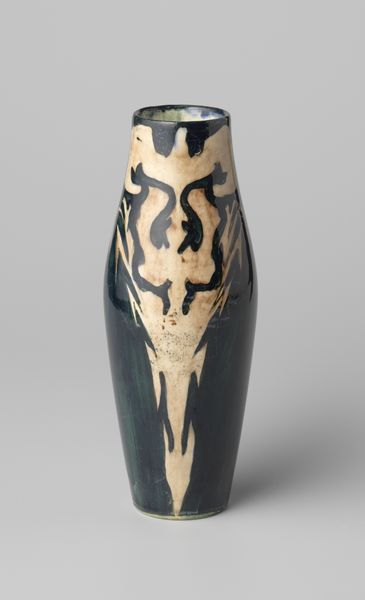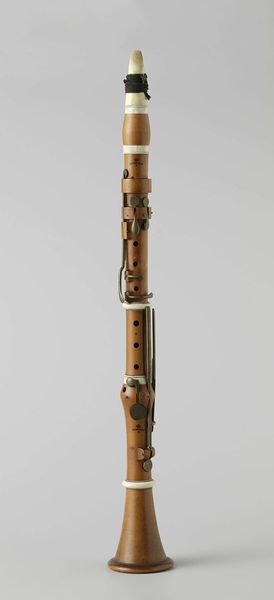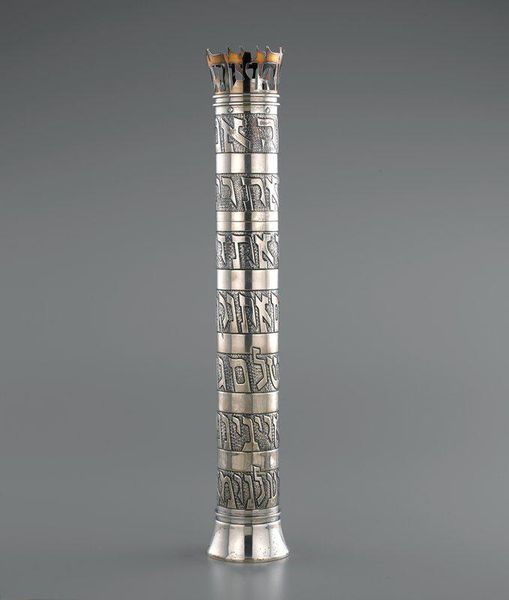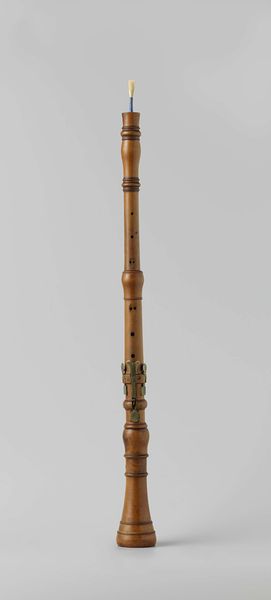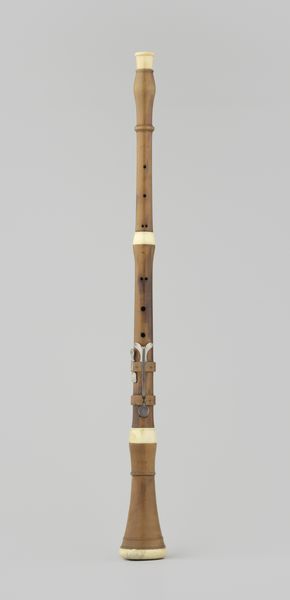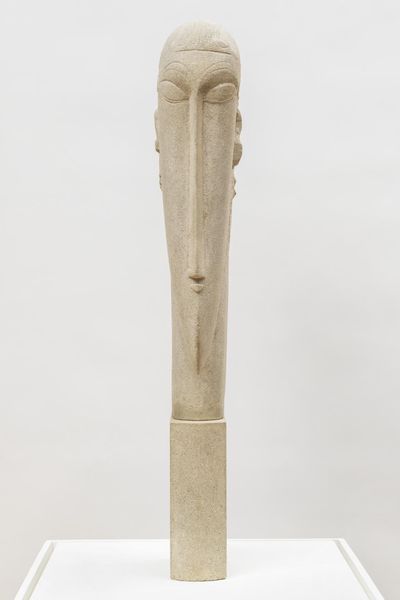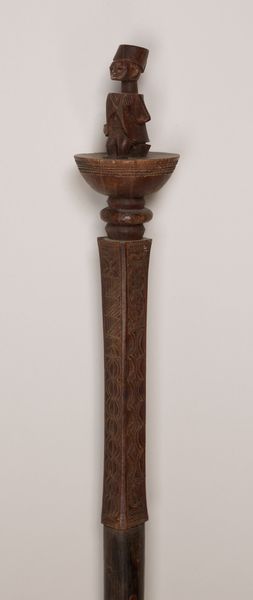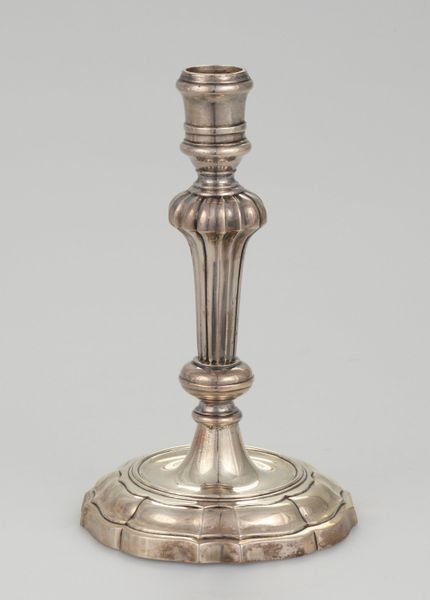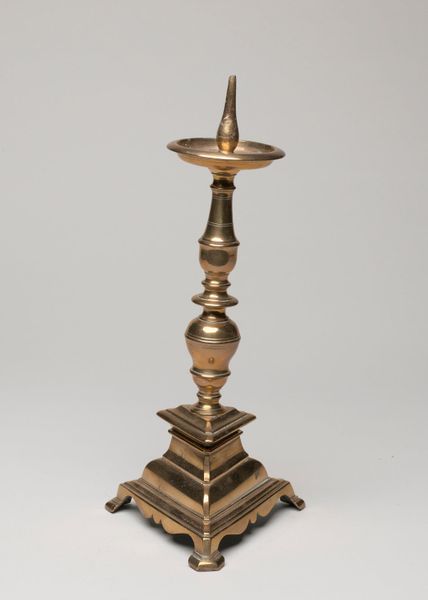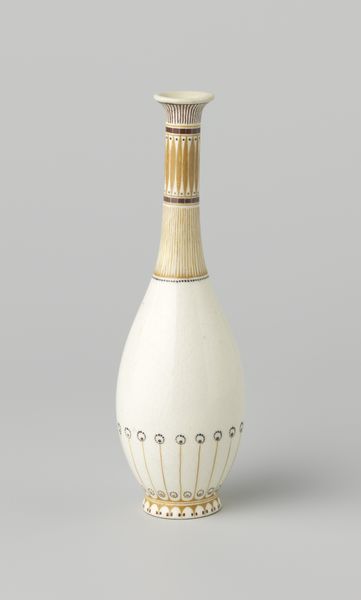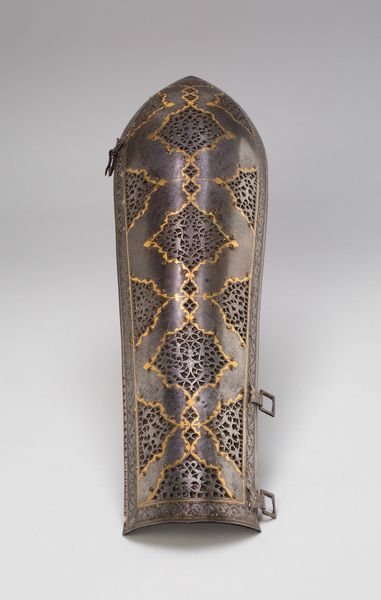
ceramic
#
art-nouveau
#
ceramic
#
form
#
decorative-art
Dimensions: 39 x 10 1/2in. (99.1 x 26.7cm)
Copyright: No Copyright - United States
Editor: We're looking at a ceramic planter on a stand from 1904, attributed to Franz Ringer, here at the Minneapolis Institute of Art. The form is striking, so stylized and upright, it almost feels architectural. What are your thoughts about this piece? Curator: Well, it certainly speaks volumes about the Art Nouveau movement's aspiration to integrate art into everyday life. We see the influence of the decorative arts, elevating a functional object, a planter, into something of visual significance. The gallery and the domestic sphere were becoming stages for displaying this new aesthetic. Do you notice how the stylized forms suggest organic growth while adhering to geometric principles? Editor: I do, there is an intriguing push and pull between geometric elements like the checkered bands and the more fluid lines around the pot itself. Was there a message these artists were hoping to express with this style? Curator: I believe so. The Art Nouveau sought to break away from industrial monotony and revive craftsmanship. By placing this planter in a home, were consumers meant to participate in an aesthetic and even social project of resistance against industrialized production? Consider too, that while promoting handmade objects, Art Nouveau designs were often still consumed by the bourgeoisie, highlighting the contradictions within the movement itself. Editor: That is interesting. It's hard to think about something like this and see it as "resistance," but I see what you mean, there are these inherent tensions built right in. Curator: Precisely! The very presence of this object within a museum collection also speaks to the shifting values attributed to the decorative arts over time. It prompts the questions, which objects gain cultural and historical recognition and why? Editor: I never really thought about it that way. I focused on the artistry and aesthetic value, but it's so interesting to learn the history and politics. Curator: Indeed, seeing art in a museum as cultural artifact is as important as any visual experience.
Comments
No comments
Be the first to comment and join the conversation on the ultimate creative platform.
